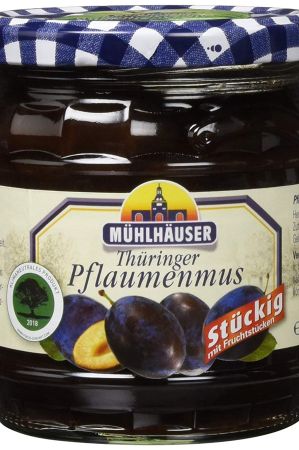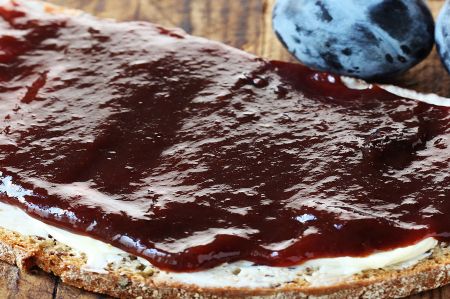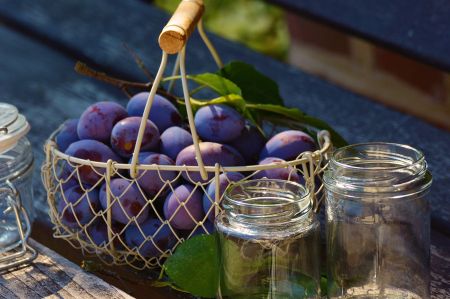The Mühlhausen plum jam – often bent goods in its day
- Written by Portal Editor
If, like us, you repeatedly find yourself in unfamiliar territory, it makes sense to always ask about regional peculiarities or abnormalities. This was also the case during our visit to the Thuringian city of Mühlhausen, which is not only surrounded by a spectacular old town with a well-preserved city wall with numerous defence towers, but can also come up with some culinary specialties.
So we were excited about the Mühlhausen plum jam and the so-called sweet cake.
Thuringian plum jam and preserves factory in Mühlhausen

Even connoisseurs and lovers of plum jam as a spread were at least familiar with the sticker on the glass packaging because the Mühlhausen plum jam is one of the best-known branded products in Germany with a market share of over 50%.
Originally marketed as "Herthä plum jam", the recipe for the Mühlhausen plum jam goes back to the founding of the "Thuringian plum jam and canning factory" by Luise and Hermann Thämert in 1908.
Nationalized as a state-owned enterprise in 1972, the plum jam was mainly exported to West Germany, which is why the popular Mühlhausen spread was sometimes only available as a buck product in the GDR.
"Bückware" plum jam from Mühlhausen

In the course of German reunification, privatization and takeover by Tegros Vertrieb GmbH followed in 1993. After its insolvency, Mühlhäuser GmbH based in Mönchengladbach, which now operates the Mühlhäuser production site, was integrated into the Spanish Helios Group in 2006.
At the end of 2016, contrary to the advertising statement "Original since 1908", which was still used, the recipe was unfortunately changed and the quality was reduced by reducing the fruit content from the previous 220 g to just 170 g of plums per 100 g of the end product. In the meantime, the old recipe has been returned to.
Sweet cake just available in January?
Made from malt flour, the brown-coloured product has been baked for Lent since ancient times and is still available from local bakeries.
The pastry consists mainly of a syrup-like, thick mass of honey and gingerbread spice on a base prepared with rye flour that already looks back on a history of about 800 years. Sweet cake should thus make the cake taste of the High Middle Ages tangible.
Also interesting and a local specialty
Please read as well:
